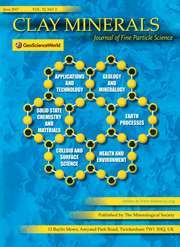No CrossRef data available.
Article contents
The influence of the clay fraction on the engineering properties of soil, with some suggestions for future research
Published online by Cambridge University Press: 14 March 2018
Extract
This is normally measured in terms of resistance to shear, which is a function of the internal friction and cohesion of the soil. The internal friction is primarily a characteristic of the coarser soil fractions and results from the interlocking of the particles; its value is a function of the normal stress on the soil. The cohesion of a soil is produced by forces binding the particles together, and is independent of the normal stress. These binding forces are accounted for partly by the, surface tension at the air-water interface of the water films surrounding the particles and partly by the intermolecular forces acting between films of water adsorbed on the surfaces of neighbouring particles.
- Type
- Research Article
- Information
- Copyright
- Copyright © The Mineralogical Society of Great Britain and Ireland 1947


